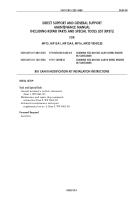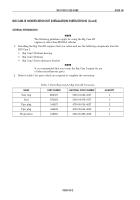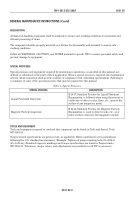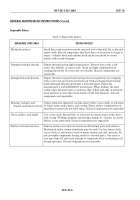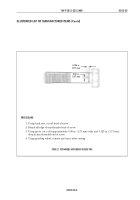TM-9-2815-225-34-P - Page 484 of 736
TM 9-2815-225-34&P
0051 00
0051 00-4
GENERAL MAINTENANCE INSTRUCTIONS (Contd)
INSPECTION—ACCEPTANCE AND REJECTION CRITERIA
NOTE
All components subjected to magnetic particle inspection shall be
demagnetized prior to assembly.
All components subjected to dye penetrant inspection shall be
cleaned after inspection. Coat part with preservative oil as
required.
Throughout this manual, measurements are used to confirm serviceability of items after a visual
inspection. Measurements will be performed as required by quality assurance, in-process inspection,
maintenance procedures, engine test report, and Final Inspection Report (FIR).
Used components and refinished parts, recovered as products of disassembly, will be examined
100 percent to determine serviceability by contractor. Refer to the maintenance WPs, work directive,
or contract for more detail.
Parts showing evidence of overheating are unrepairable by any process. Discard these parts.
WARNING
Compressed air source must not exceed 30 psi (207 kPa). Wear
eyeshields when cleaning with compressed air. Failure to comply
may result in injury to personnel.
NOTE
Some parts may not look exactly like illustrations. Manufacturing
methods may change part appearance, but parts are functionally
the same.
INSPECT
ACTION
Oil passages
Remove all obstructions with compressed air or by
working a soft wire back and forth through oil
passage.
Threads (internal and external)
Inspect threads for minor irregularities. For
damaged thread repair, refer to table 3, Repairable
Defects.
Machined surfaces
Check for damage that could cause oil leakage or
malfunction of the part. Refer to table 3, Repairable
Defects.
Gear
Check for nicks, burrs, or scoring. If any such
conditions are found, refer to table 3, Repairable
Defects.
Table 2. General Inspection Guidelines.
Back to Top


